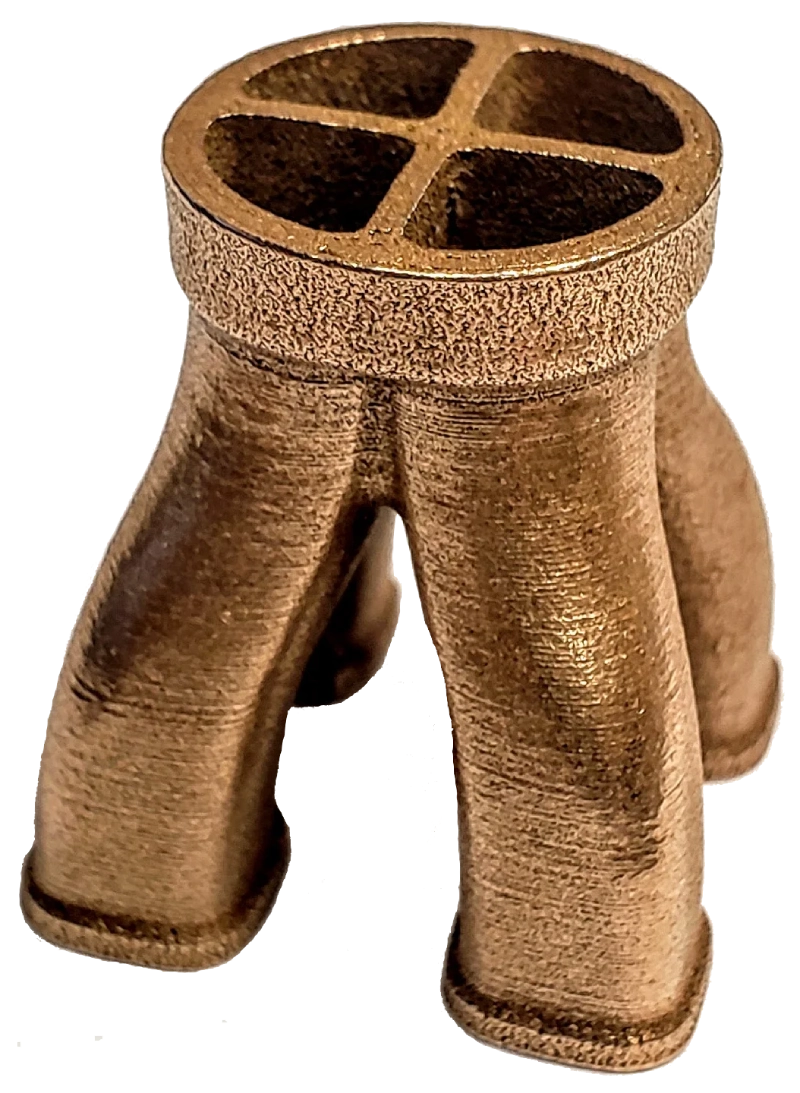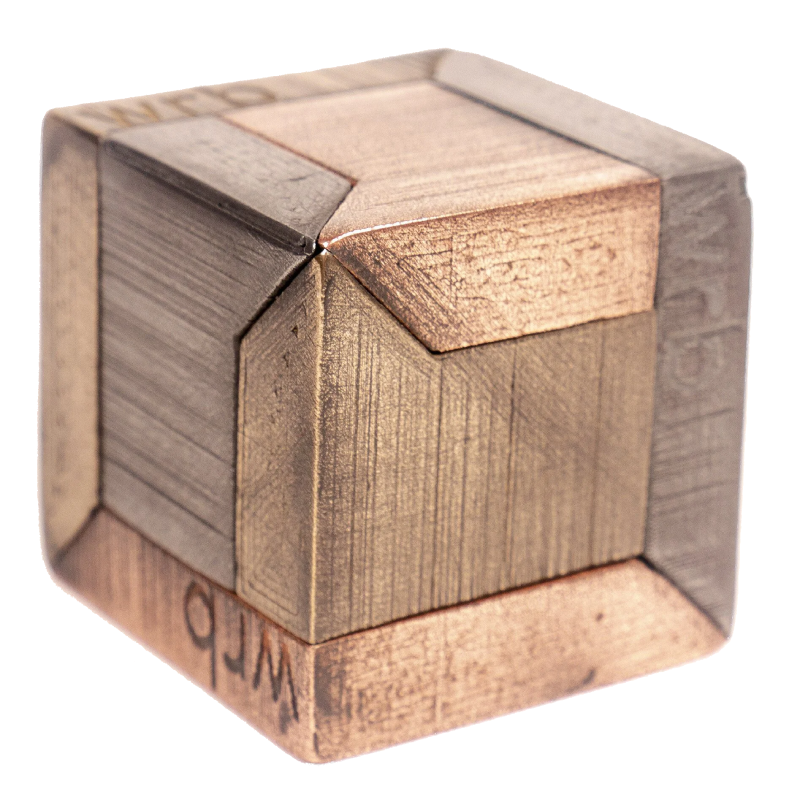Frequently Asked Questions
Is post-processing required for metal 3D prints?
Post-processing is essential for metal 3D prints to achieve optimal surface finish and mechanical properties. Techniques such as tumbling, polishing, and heat treatment enhance the part's performance and aesthetics, making post-processing a crucial step in the overall fabrication process.
What are the benefits of using a metal 3D printer?
The benefits of using a metal 3D printer include the ability to create complex geometries, reduce material waste, and achieve high precision in part production. This technology enhances design flexibility and accelerates the prototyping process, making it ideal for various industries.
Can metal 3D printing produce complex geometries?
Metal 3D printing can indeed produce complex geometries. This technology allows for intricate designs and shapes that are often difficult or impossible to achieve with traditional manufacturing methods, making it ideal for advanced engineering applications.
Can metal 3D printing be used for aerospace applications?
Metal 3D printing can be effectively used for aerospace applications. Its ability to produce complex geometries and lightweight components makes it ideal for improving performance and efficiency in the aerospace industry.
What are the benefits of metal filament 3D printing?
The benefits of metal filament 3D printing include the ability to create complex geometries, reduced material waste, and the production of strong, functional parts that can be further processed or finished to meet specific requirements.
How does a metal filament 3D printer work?
Metal filament 3D printers work by extruding a composite filament made of metal powder and a thermoplastic binder through a heated nozzle, layer by layer, to create a part. After printing, the part undergoes debinding and sintering to achieve full-density metal.
What are the applications of metal 3D printing?
The applications of metal 3D printing are diverse and include aerospace components, automotive parts, medical implants, and custom tooling. This technology allows for complex geometries, lightweight designs, and rapid prototyping, enhancing innovation across various industries.
Can a metal 3D printer produce functional parts?
Metal 3D printers can indeed produce functional parts. Utilizing advanced techniques like sintering, these printers create durable, high-quality components suitable for various applications across industries.
Can metal 3D printing be used for medical implants?
Metal 3D printing can be effectively used for medical implants. This technology allows for the production of complex, customized designs that meet specific patient needs, ensuring better fit and functionality in medical applications.
What materials are compatible with metal 3D printers?
The materials compatible with metal 3D printers include a variety of metal powders such as stainless steel, aluminum, titanium, and bronze, which can be effectively used with processes like binder jetting and powder bed fusion.
How durable are metal 3D printed parts?
The durability of metal 3D printed parts is high, particularly after sintering, which enhances their strength and resilience, making them suitable for various applications in demanding environments.
What is the average printing speed for metal 3D printers?
The average printing speed for metal 3D printers varies, typically ranging from 10 to 50 cubic centimeters per hour, depending on the printer model and material used.
Are there safety precautions for metal 3D printing?
Safety precautions for metal 3D printing include using appropriate personal protective equipment (PPE), ensuring proper ventilation, and following safety guidelines for handling metal powders and finished parts to minimize health risks and ensure a safe working environment.
What types of finishing techniques are available?
The types of finishing techniques available for metal parts created with Filamet™ include tumbling, polishing, and applying patinas. Each method enhances the aesthetic and functional qualities of the finished product.
How can defects in metal prints be addressed?
Defects in metal prints can be addressed through careful inspection, followed by methods such as reworking, surface finishing, or applying appropriate post-processing techniques to enhance the final quality of the printed parts.
Are there limitations in metal printing technology?
Metal printing technology has certain limitations, including constraints on part size, material variety, and surface finish quality. Additionally, factors such as production speed and the complexity of designs can impact the overall effectiveness of the printing process.
Which industries benefit most from metal 3D printing?
The industries that benefit most from metal 3D printing include aerospace, automotive, medical, and tooling. These sectors leverage the technology for rapid prototyping, complex geometries, and lightweight components, enhancing efficiency and innovation.
What innovations are emerging in metal 3D printing?
Innovations emerging in metal 3D printing include advancements in materials, such as improved metal alloys and composites, enhanced printing techniques for better precision, and the integration of AI for optimizing design and production processes.
How do costs compare with traditional manufacturing?
The costs of metal 3D printing with Filamet™ can be more competitive than traditional manufacturing, especially for low to medium production runs, as it reduces material waste and tooling expenses while allowing for complex geometries without significant cost increases.
What maintenance is required for metal 3D printers?
Maintenance for metal 3D printers includes regular cleaning of the build chamber, checking and replacing filters, ensuring proper calibration, and inspecting the nozzle and feed systems for clogs or wear.
Can metal 3D printing be used for prototyping?
Metal 3D printing can indeed be used for prototyping. It allows for rapid production of complex geometries and functional parts, enabling designers to test and iterate designs efficiently before moving to full-scale production.
How does metal fusion impact print quality?
Metal fusion significantly impacts print quality by ensuring proper bonding between layers, reducing defects, and enhancing the overall structural integrity of the final part. This process is crucial for achieving precise dimensions and a smooth surface finish.
What is the role of heat treatment in metal printing?
The role of heat treatment in metal printing is to enhance the mechanical properties of printed parts. It helps relieve internal stresses, improve hardness, and optimize microstructure, resulting in stronger and more durable components.
Are there environmentally friendly options for metal 3D printing?
Environmentally friendly options for metal 3D printing do exist. Techniques such as using recycled metal powders and sustainable materials, along with energy-efficient printing processes, help minimize environmental impact while ensuring high-quality results.
What design considerations are critical for metal parts?
Critical design considerations for metal parts include optimizing geometry for strength, ensuring adequate support structures during printing, and accounting for thermal expansion and contraction to prevent warping during the sintering process.
Can metal 3D printing enhance supply chain efficiency?
Metal 3D printing can significantly enhance supply chain efficiency by reducing lead times, minimizing waste, and enabling on-demand production, thus streamlining inventory management and lowering overall costs.
What software is best for metal print design?
The best software for metal print design includes CAD programs like SolidWorks, Autodesk Fusion 360, and Rhino, which offer robust modeling tools tailored for creating intricate designs suitable for metal 3D printing.
How do different metals affect print outcomes?
Different metals significantly affect print outcomes by influencing the mechanical properties, surface finish, and thermal behavior of the final parts. Each metal offers unique characteristics that can enhance or limit the performance of 3D printed components.
Is training necessary for operating metal 3D printers?
Training is essential for operating metal 3D printers. It ensures users understand the complexities of the technology, safety protocols, and proper handling of materials, leading to better quality prints and enhanced operational efficiency.
What trends are shaping the future of metal 3D printing?
The trends shaping the future of metal 3D printing include advancements in material development, increased automation in printing processes, and a growing focus on sustainability, enabling more efficient and accessible production methods for a wider range of applications.


